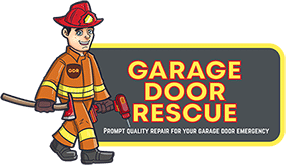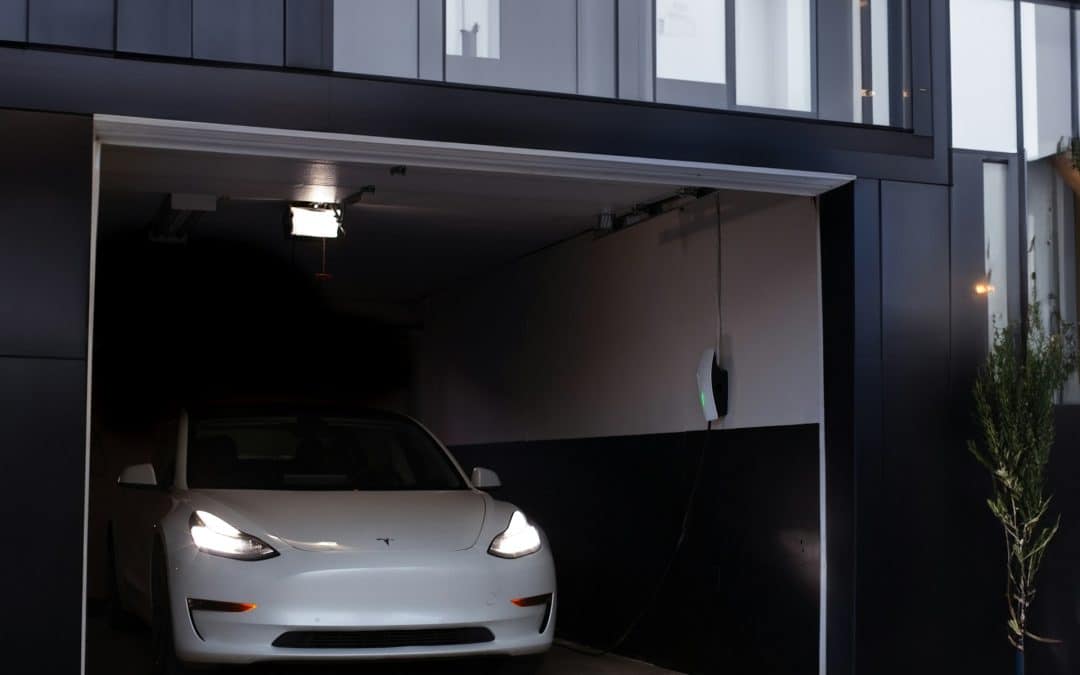A garage door spring is a crucial component of your garage door system. It helps in lifting the heavy door and ensures smooth opening and closing. However, like any mechanical part, garage door springs can break or wear out over time. Identifying a broken spring early can save you from costly repairs and potential safety hazards.
You might notice some unusual changes in the way your garage door operates if a spring is broken. These changes can be subtle at first but can quickly become more evident. Knowing what to look for can help you spot a broken spring before it leads to more serious issues. One of the first signs might be strange noises like loud bangs or creaks when you try to open or close the door. Another common sign is when the door doesn’t open or close properly, or it might not move at all.
Aside from operational issues, you can also perform a visual inspection to detect a broken garage door spring. Look for visible gaps or a complete break in the spring itself. Loose or dangling cables around the springs can also indicate a problem. Being aware of these signs can help you take immediate action to address the issue and maintain the safety and functionality of your garage door. This article will guide you through the signs of a broken garage door spring, how to inspect for issues, test your garage door, and the steps to take if you suspect a problem.
I. Common Signs of a Broken Garage Door Spring
1. Unusual Noises
One of the first signs of a broken garage door spring is unusual noises when you try to open or close the door. You might hear a loud bang, which happens at the moment the spring breaks. This noise can be startling and is often a clear indicator that something is wrong. Additionally, you may hear squeaking, grinding, or creaking noises if the spring is damaged but not completely broken. These sounds suggest the spring is under stress and may fail soon.
2. Door Won’t Open or Close
Another major sign is when your garage door won’t open or close properly. If a spring is broken, the door may become stuck in place or move only a few inches before stopping. The door may feel much heavier than usual if you try to lift it manually. This happens because the spring is no longer counterbalancing the door’s weight. In some cases, the door may appear crooked or lopsided, struggling to move evenly along its tracks.
3. Visible Separation in the Spring
A visual inspection can also reveal a broken garage door spring. Look for visible gaps or breaks in the coils of the spring. If you notice a gap where the coils should be tightly wound together, the spring is likely broken. Another clue is seeing loose or dangling cables, which can result when a spring breaks and releases tension from the entire system. Identifying these visible signs early can prevent further damage and ensure your garage door operates safely.
II. How to Perform a Visual Inspection
1. Inspect for Gaps or Breaks
Performing a visual inspection is a crucial step in identifying a broken garage door spring. Start by examining the springs closely. Look for any gaps between the coils, which should usually be tightly wound together. A noticeable gap indicates a break in the spring. A completely broken spring may show a clear separation, making it easier to identify. Take your time to inspect both sides of the door to ensure you don’t miss any potential issues.
2. Look for Loose or Dangling Cables
Another aspect to check during your visual inspection is the condition of the cables around the springs. Broken springs can cause the cables to become loose or dangle. These cables are integral to the door’s operation, and any issues with them can indicate a problem with the springs. If you see cables out of place or hanging down, it’s a sign that the spring system may be compromised. Make sure to inspect all cables thoroughly.
3. Check Alignment and Position
Finally, check the alignment and position of the garage door and its parts. A broken spring can cause the door to become misaligned. Look at the tracks and see if the door sits evenly within them. If the door is crooked or looks like it’s leaning to one side, it could mean a spring is broken or weakened. Also, check if the door is sitting lower on one side, as this can signal an issue with the balance and alignment. These visual indicators can help confirm whether you have a broken garage door spring.
III. Testing Garage Door Functionality
1. Manual Operation Test
To ensure your garage door springs are in good condition, perform a manual operation test. Start by disconnecting the automatic opener. You can usually pull a red cord to do this. Once disconnected, try lifting the door manually. If the door is difficult to lift or feels unusually heavy, it could be a sign that the springs are not functioning properly. The door should move smoothly and stay open when lifted halfway. If it falls or doesn’t stay in place, the spring is likely broken or needs adjustment.
2. Balance Test
Another important test is the balance test. Lift the door halfway manually and let go. The door should stay in this position without moving up or down. If the door drops or shoots up, it indicates an imbalance, which often results from a faulty spring. An unbalanced door puts extra strain on the entire garage door system, shortening the life of other components. This test is simple but provides valuable insight into the condition of your springs.
3. Opener Resistance Check
The resistance check involves reconnecting the automatic opener and operating the door. Listen and feel for any unusual resistance or strain on the opener. An opener struggling to lift or lower the door could signal a problem with the springs. If the opener seems to work harder than usual, it might be compensating for a broken or weakened spring. This could lead to increased wear on the opener itself. Regularly performing these tests can help you detect issues early and maintain a smoothly operating garage door.
IV. Safety Precautions and Next Steps
1. Avoiding DIY Repairs
Working on garage door springs can be extremely dangerous due to the high tension they are under. Avoid attempting DIY repairs, even if the problem seems minor. Improper handling can lead to serious injuries or further damage to the door system. Springs can snap unexpectedly if not treated carefully. Instead of risking personal safety, it’s better to seek professional help when dealing with broken or malfunctioning springs.
2. When to Call a Professional
Knowing when to call a professional is crucial for your safety and the longevity of your garage door. If you notice any of the common signs of a broken spring, or if your manual tests indicate problems, it’s time to reach out for professional assistance. Experts have the necessary tools and experience to handle spring repairs safely and effectively. They can also perform a thorough inspection to identify any other potential issues, ensuring your garage door operates smoothly.
3. Tips for Regular Maintenance
Regular maintenance can help extend the life of your garage door springs and prevent unexpected failures. Schedule periodic inspections to check the condition of the springs and other components. Keep the springs well-lubricated to reduce friction and wear. Make sure the door’s balance is checked regularly to avoid putting extra stress on the springs. Simple maintenance practices can go a long way in keeping your garage door functioning well and avoiding costly repairs.
Conclusion
Spotting a broken garage door spring early is essential for maintaining the safety and functionality of your garage door. By paying attention to common signs like unusual noises, difficulty in opening or closing the door, and visible gaps in the springs, you can identify issues before they become serious problems. Performing a detailed visual inspection, regularly testing the door’s functionality, and understanding when to call a professional can save you time, money, and hassle in the long run.
Taking the right safety precautions is crucial. Avoid DIY repairs to prevent injuries and further damage. Instead, rely on professional services to handle the high-tension springs safely and effectively. Regular maintenance, such as lubricating the springs and checking the door’s balance, will help ensure the longevity of your garage door system. By following these steps, you can keep your garage door running smoothly for years.
If you notice any signs of a broken spring or need professional garage door repair and maintenance, contact Garage Door Rescue. Our expert team is ready to help you keep your garage door in top condition. Call us today to schedule an appointment and ensure your garage door operates safely and effectively.

